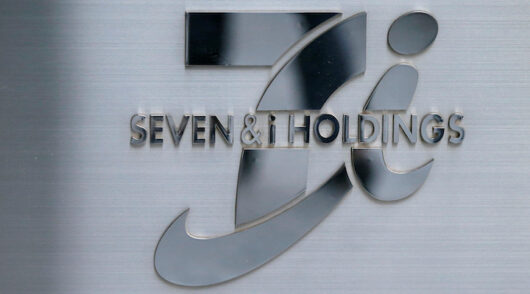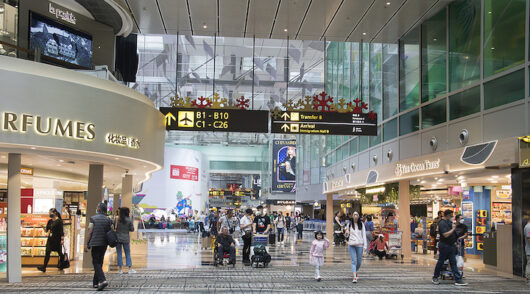As retail commentators around the world gaze into their crystal balls for a peek at 2012, the overriding image I get is… one big blur.
On the one hand it’s a blur of speed, as the pace of change continues to ramp up and customer attention spans shorten.
On the other hand it’s a blurring of the lines between old and new retail. Digital is bleeding into physical retail (and vice versa), the wallet is merging into the smartphone, global retailers are moving into local markets, manufacturers are becoming retailers (and retailers manufacturers)…and on it goes. The nice, neat dividing lines of times past have been obliterated forever.
The result is a gloriously messy, but positively exciting retail landscape.
Still… if you zoom out a little from the blurred image in the crystal ball it is possible to pick out three megatrends which help provide a framework for the disruption in retail: Digitisation, Globalisation and Polarisation.
Digitisation – Retail continues to be transformed into bits and bytes; both in terms of the shift to e-commerce, the incorporation of technology into physical stores, and the digitisation of product. (Want proof? This year Apple is projected to do US$2.91 billion in App sales alone. That’s not far off JB Hi-Fi’s annual turnover. One of my favourite quotes of the year was from Netscape founder Marc Andreeson who said that “software is eating the world.”) The poster child for digitisation is Amazon. In June this year, 400 million people visited one of Amazon’s sites – that’s 20 per cent of the entire global online population. Digitisation is also affecting store sizes and networks – retailers are realising they need fewer and smaller stores (with the exceptions of flagships).
Globalisation – This year, we saw Zara and TopShop invade our turf with highly successful local launches. These are just the advance parties – watch out for the likes of H&M, Uniqlo and Abercrombie & Fitch in 2012. Partially because of a lack of growth in home markets, retailers are rushing to expand across the globe and Australia is a hugely attractive market both economically and culturally. At the same time, global online retailers are making it much easier for Australians to buy; opening local offices here (eg Asos), and offering prices in Australian dollars with free shipping.
Polarisation – More than ever, retail is polarising into premium and value segments, with customers happy to shop both ends of the market. In 2011, we saw luxury retailers such as Louis Vuitton trade well, and at the same time extreme value offers such as Primark, Costco and the myriad dollar stores around the world proliferate. This will continue in 2012.
Amongst these three key trends, I’ve picked out 12 things to watch out for in 2012. (And to continue my theme, many of these blur into each other!)
The Rise of SoMoLo Shoppers – “SoMoLo” is short for “Social, Mobile, Local”. It describes shoppers enabled by smartphones who are instantly socialising their selections with friends and family, researching and buying on the run, and taking advantage of local deals pushed to their handheld devices. It’s arguably the single most defining trend disrupting retail.
The Growth of Retail Hackers – Wired Magazine in the US coined the term “retail hacker” to describe the “reconception of shopping as a contact sport in which consumers increasingly refuse to buy on the terms dictated to them.” Customers are in control and they take no prisoners – gleefully snapping up deals on the group-buying sites, or shamelessly researching in store and then buying at the cheapest possible prices online. (US electronics retailer Best Buy is often described as “Amazon’s showroom”.) If you think customers are going to behave themselves in 2012, then you’d better think again.
Putting the Squeeze on Prices – The level of total price transparency available via the web is putting downward pressure on margins across the world, and Australia will continue to feel the squeeze in 2012. Where this will end up is absolutely clear. As Ross Gittens, economics commentator in the Sydney Morning Herald noted this year, “we’re going to see prices around the world falling to roughly the same level.” What’s not clear is how much blood will be spilled getting to that point.
Small Time is Back Big Time – Independent (or “indie”) retailers have an opportunity to shine in 2012, as jaded customers crave individuality and authenticity. For chain retailers, it’s important to act a little more “indie”, celebrating diversity in the look and feel of your stores, and localising your offer.
The Treasure Hunt is On – On the Westfield World Retail Study Tour this year, I came across an “off-price retailer” called Ross Stores. They embrace the concept of the “treasure hunt”, buying end-of-season runouts, product lines that didn’t quite work (all good quality branded product), and shipping the goods into store so that no two locations have exactly the same stock. Customers love the thrill of the chase, and the “treasure hunt” premise is set to be a major retail tactic in 2012, not least of which because it encourages foot traffic into physical stores. Fascinatingly, Ross Stores has no e-commerce offer.
Mashops and Digitail – These are two buzzwords that essentially mean the same thing – “mashing up” technology and the physical store (Mashops), and combining digital and retail (Digitail). The effect is that it can be difficult to tell where the store ends and the web begins and vice versa. Expect to see more “endless aisles” in-store (terminals to allow customers to shop the web if they can’t find what they need on the rack), immersive and interactive digital experiences, check-outs on your smartphone, iPad-enabled shop assistants and more.
Responsible Retail – Considered consumption is gathering pace. Increasingly, shoppers will prefer retailers who are socially and environmentally responsible, and giving back to their local communities. This year I witnessed Selfridges in London champion “retail activism”, via a promotion called “Project Ocean”, which centred on sustainable fishing. Responsible Retail will be more influential in 2012.
Digital Wallets Take Off – Starbucks has had huge success this year with a bespoke mobile payment app that allows customers to purchase their Double Shot Caramel Macchiatos via their phones. In terms of the wider application of Digital Wallets, we are still in the “Betamax versus VHS” stage of the game, with players like Google Wallet and V.me (Visa’s version) competing for supremacy. But purchasing via smartphones is set to explode in 2012, and it’s a good thing for retailers, because easier payments can translate into bigger baskets.
Store as Hangout – In a digital world, the physical store is far from dead, but it has to be a place – an experience centre – where people actually want to spend time. The best retailers already understand that “dwell time equals sell time”, and are actively encouraging customers to stay and play. McDonald’s is a great case in point. Their strategy has shifted from “In.Fed.Out” to “Hangout”, and that’s the reason for innovations such as McCafe, free wireless and playgrounds. Expect more stores to embrace the “hangout” trend in 2012.
Pop Ups Mash Up – Pop Ups are not passé, but temporary stores are becoming more inventive with the use of technology. This year we saw Tesco Homeplus in Korea build a virtual supermarket in a subway with images of shelves and QR codes…
…Netaporter does something similar with a “shopping window” in the UK…
…and Airwalk set up “invisible pop-up” stores in the US.
We can look forward to more Pop Up creativity in 2012.
AntiMall – Linked to points #4 and #10 above, there’s a growing backlash against “corporate cookie-cutter” shopping malls. In both San Francisco and London this year, we have seen the likes of Boxpark; a “Pop Up Mall”, constructed out of shipping containers with (supposedly) edgier, more innovative retailers. Whether it’s Pop Up Malls, or traditional markets, the AntiMall trend will be small but significant in 2012.
Click & Collect – Retailers are starting to link their online and offline offers far more effectively, efficiently and seamlessly. This year, we saw Walmart heavily promote “click and collect” – order online, pick up in store. And we also saw both House of Fraser in the UK and Walmart launch “stock-less” stores, where customers could both order and collect their online purchases. In an omni-channel world, click and collect in its various forms will be big in 2012.
So there you have it. One big breathless blur for retail in 2012. Are you ready for the ride?
Jon Bird is CEO of specialist retail marketing agency IdeaWorks and Chairman of Octomedia, publisher of Inside Retail. E-mail: jon.bird@ideaworks.com.au Blog:www.newretailblog.com Twitter: @thetweetailer






